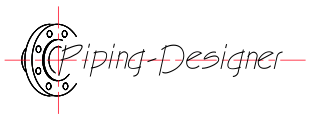Linear Velocity
Linear Velocity Formula |
||
|
\( \overrightarrow{v} \;=\; r \cdot \omega \) (Linear Velocity) \( r \;=\; \dfrac{ \overrightarrow{v} }{ \omega }\) \( \omega \;=\; \dfrac{ \overrightarrow{v} }{ r }\) |
||
| Symbol | English | Metric |
| \( \overrightarrow{v} \) = Linear Velocity | \(ft\;/\;sec\) | \(m\;/\;s\) |
| \( r \) = Circular Path Radius | \(deg\) | \(rad\) |
| \( \omega \) (Greek symbol omega) = Angular Velocity | \(deg\;/\;sec\) | \(rad\;/\;s\) |
Linear velocity, abbreviated as v, is the rate of change of an object's linear position with respect to time. It is a vector quantity that has both magnitude and direction. In simpler terms, linear velocity tells you how fast an object is moving in a straight line and in which direction. It's important to note that linear velocity is different from angular velocity. Linear velocity is concerned with the motion along a straight path, while angular velocity deals with the rate of rotation around an axis.

